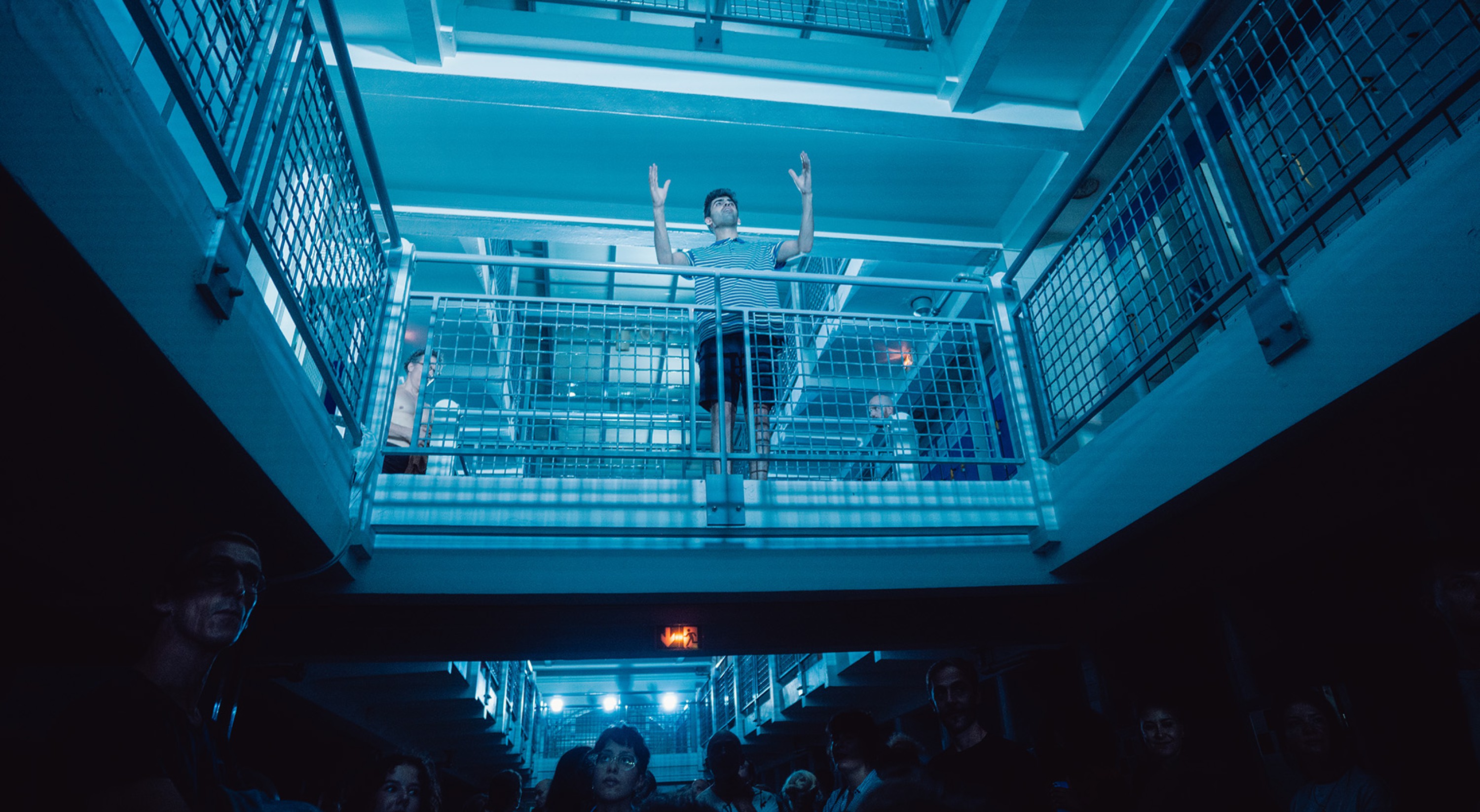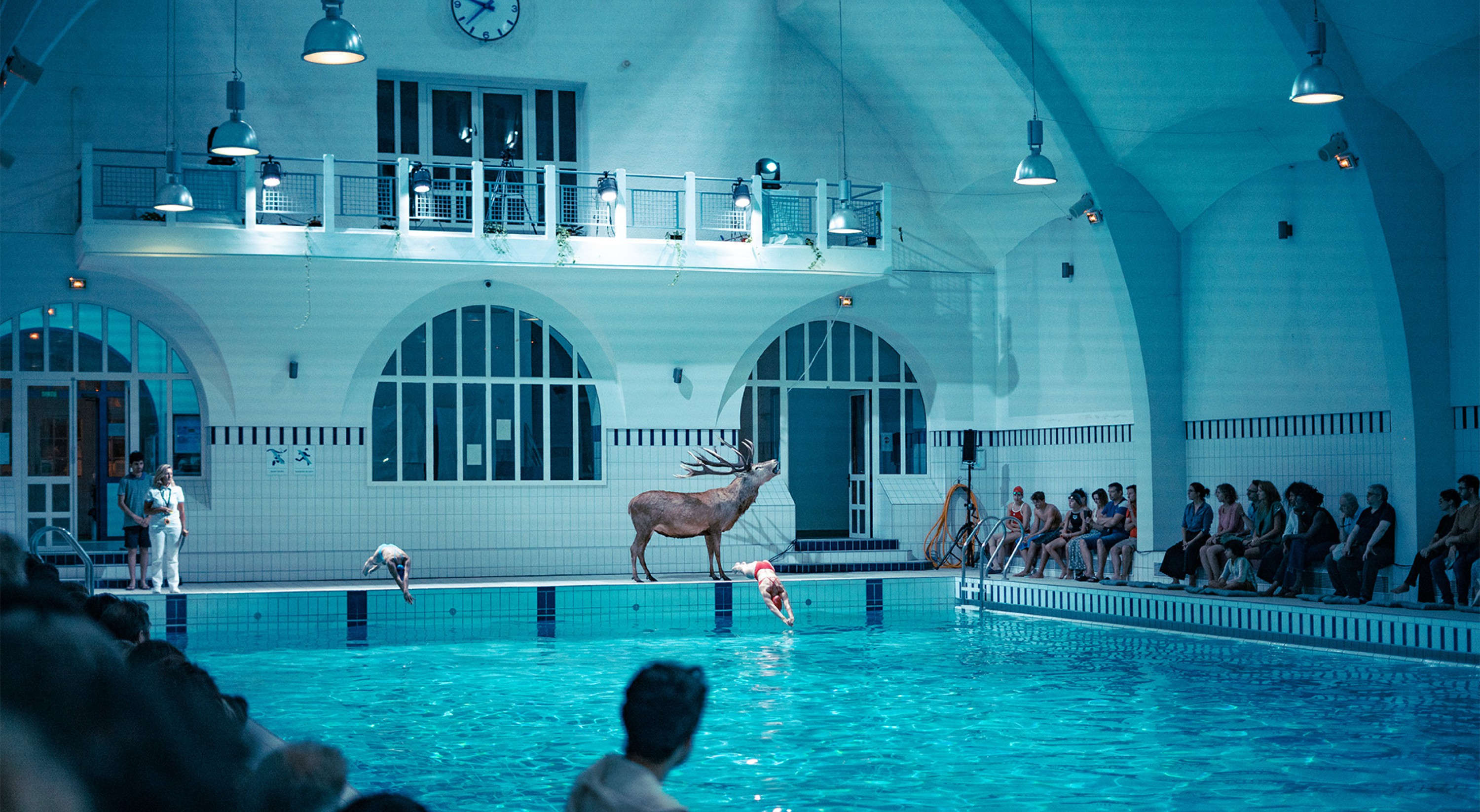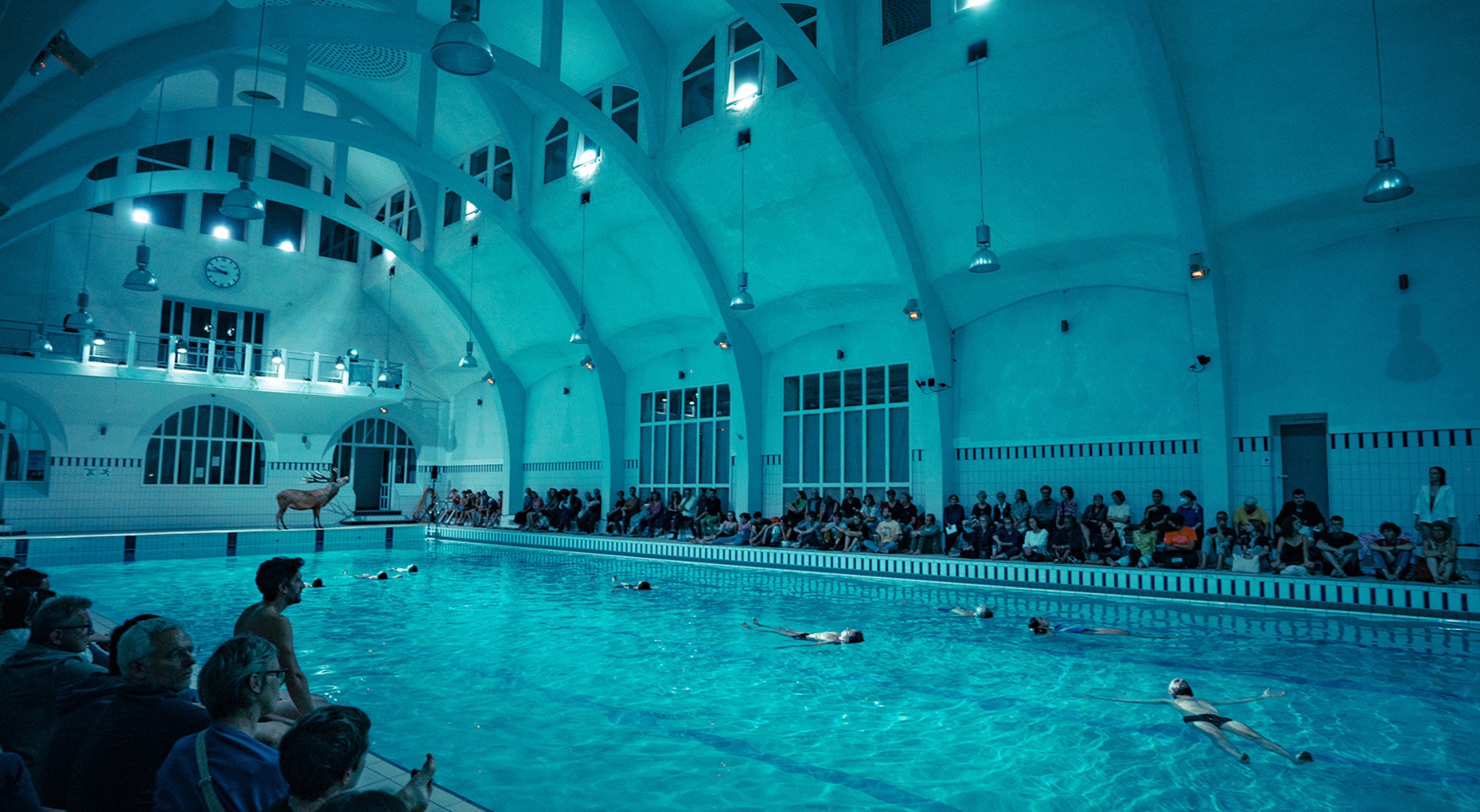Alessandro Sciarroni
IRIS
septembersept 16 – 17
Design, Alessandro Sciarroni
Musical composition, Aurora Bauzà and Pere Jou after Sicut Cervus, Motet by Giovanni Pierluigi da Palestrina (1525-1594)
Ensemble Dynamique
Direction, Oussama Mhanna
Singers, Antoine Ageorges, Marc Alberto, Quentin Cendre-Malinas, Christophe Delerce, Aïda Delpuech, Luc Doval, Pierre-Louis Egloff, Louise Fudym, Irina Golovina, Emily Lechner, Cécile Massard, Marie-Josée Matar
Swimmers, Emy Brouillard, Adam Moussa, Kylian Portal, Stéphanie, Eva and Julia Retailleau, Julie Rousseau
Referee, Virginie Portal
Costumes, Ettore Lombardi
General coordination, Lisa Delmas
Consulting and development, Lisa Gilardino
Administration and production, Chiara Fava
Communication, Pierpaolo Ferlaino
Stage manager, Mickaël Marchadier
Produced by Festival d'Automne à Paris
Labeled Paris 2024 - Olympiade Culturelle, as part of the festival FORMES OLYMPIQUES and the Heritage Days
In partnership with the Butte-aux-Cailles swimming pool and the CENTQUATRE-PARIS
Alessandro Sciarroni is an associate artist of CENTQUATRE-PARIS and Triennale Milano Teatro 2022-2024
With the support of Dance Reflections by Van Cleef & Arpels
With the support of the Institut Culturel Italien de Paris
At the invitation of the Festival d'Automne, Italian choreographer Alessandro Sciarroni presents IRIS, an original performance. The audience moves through the spaces of the Butte-aux-Cailles indoor pool, around swimmers and a musical ensemble.
Alessandro Sciarroni made his mark on the European stage in 2012 with his emblematic trilogy Will you still love me tomorrw?, a work of great formal rigour based on traditional dance, juggling and goalball, a sport for the visually-impaired and the blind. Setting out each time to create the unexpected, he distinguished himself during the 2022 edition of the Festival d’Automne by creating a remarkable site-specific piece in the former Centquatre stables. Surprises of all kind become possible when the axes of his research converge on paralympic swimmers and a choir made up of performers in the Butte-aux-Cailles swimming pool. By taking over all the different parts of this historic place with its art-nouveau architecture, the choreographer creates a heterotopia, an unworldly space in which homage is paid to the beauty and fragility of life. This performance between art and sport uses as its reference point the Paris Olympic games, and in particular its less media-friendly facet, the Paralympic Games.
See also


